All that remained, now, was considerations for the copper skin, itself.
Measurements made for the restoration's engineering analysis showed that the copper corrosion rate over its first 100 years was only 5%. The corrosion mechanism for copper is early oxidation over the first 10-25 years and then stabilization, once a patina is fully formed. Although some areas of the patina were formed darker than others, this was not the result of a different corrosion rate. Rather, it was thought to be due to erosion of the patina in certain spots. In other words - strictly cosmetic.
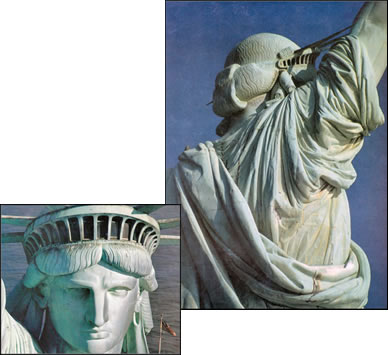 Liberty Skin Condition
Liberty Skin ConditionThe restoration team, after a careful and thorough examination, decided not to disturb the existing patina. Where coal tar had seeped out from the interior, they used dentil drills and other tools to remove it carefully. For the accumulation of a 100 years of weathering grit and grime, they used pressurized fresh water only.
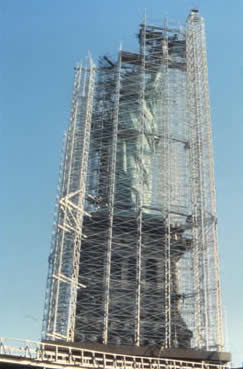 Liberty in Scaffold
Liberty in ScaffoldThere were some few areas where liquids had accumulated and caused abnormal corrosion, and other areas that had been mechanically damaged. Those areas were patched.
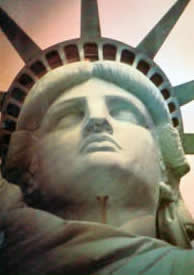 Corrossion Deposits
Corrossion Deposits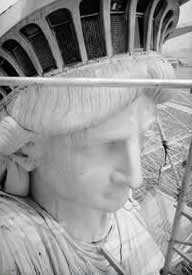 Mechanical Damage
Mechanical DamageThe corroded copper was cut away. New copper of the same thickness was then installed either by riveting or brazing. And, then, the patch was artificially patinated with a copper sulfate solution to match the surrounding area.
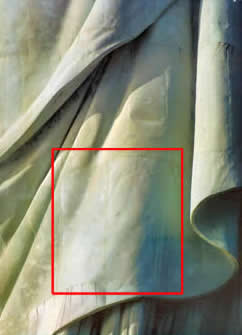 Patched and Repatinated
Patched and RepatinatedCDA is proud to have part an integral part of the Lady's restoration team. Paul Anderson, now retired, summed up the copper side of the task. He said: "Replacing the copper flame and restoring the torch was about all the copper work required. Despite a century of abuse, the statue's copper skin was virtually intact, losing less than 5-thousandths of an inch (0.005") in one of the most hostile environments imaginanable."
 The Lady Restored
The Lady RestoredSo when you come right down to it, the First Lady of the Metals was not really reclothed. Her insides did undergo quite a bit of orthopedic surgery. In fact, a nearly full skeletal replacement.And, her flame was rekindled with new copper. But, as for her clothes: she has only few patches after more than a hundred years of wear.
That's pretty good quality clothing.
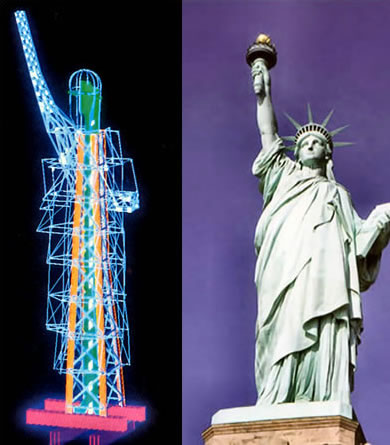 The Restored Structure
The Restored StructureSo, on behalf of the copper industry, here's a commercial message from your First Lady:
Copper was clearly a good idea 100 years ago. Now, with advances in technology, copper is an even better idea today:
- Copper for beauty.
- Copper for warmth.
- Copper for carefree maintenance.
- Copper for the ages.
 The First Lady of the Metals
The First Lady of the MetalsWe're kind of proud of that testimonial to copper.
For additional details on the fascinating history of the Lady, please check out the National Park Service bookstore on Liberty Island on your next visit there or visit the National Park Service Web site for additional articles. Another excellent source is the 1986 PBS television documentary by Ken Burns. Of particular interest to you may be the Architectural and Engineering Report that was done for the French-American Committee for the Restoration of the Statue of Liberty, in 1983.
